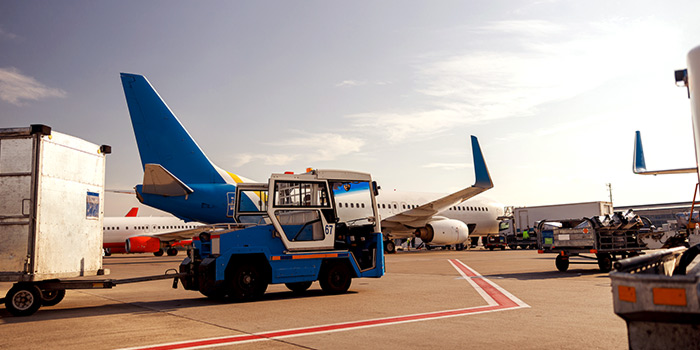Revolutionizing Ground Handling Operations: The Rise of Autonomous Apron Vehicles
29 Jun 2024
Highlights:
Ask any aviation veteran and they will tell you that in this industry, nothing ever stays the same for long. That’s due to the very nature of the aviation sector, dependent as it is on technological innovations that constantly change the game. The COVID-19 pandemic revealed several inefficiencies within airport infrastructures, including those associated with ground handling processes. To address these challenges, one innovative solution is gaining traction: the use of autonomous apron vehicles. These electric, driverless vehicles promise to revolutionize ground handling processes, enhancing safety, efficiency, and sustainability in the commercial aviation sector.

Enhancing Safety with Autonomous Technology
Human error is a predominant cause of accidents on both roads and airport aprons. Autonomous vehicles offer a compelling answer to this problem. Equipped with intelligent control systems and advanced communication technologies, autonomous vehicles can significantly reduce the likelihood of accidents. Through Car-to-X communication, these vehicles can exchange data with each other and the wider infrastructure network, allowing them to anticipate and react to potential hazards much faster than human drivers. This proactive approach to safety means that dangerous situations can be identified and mitigated before they escalate into serious incidents.
Cost Efficiency and Operational Flexibility
The financial benefits of autonomous vehicles are equally compelling. By automating ground handling tasks, airports can substantially cut personnel costs. Autonomous vehicles can operate around the clock without the need for breaks, shifts, or overtime pay, thus ensuring continuous and flexible operations. This not only allows human workers to be reallocated to more complex and valuable tasks but also ensures that ground handling processes are not disrupted by human factors such as fatigue or scheduling conflicts.
The electric nature of these vehicles aligns with the industry's push towards sustainability. Autonomous electric vehicles boast a predictive, fuel-efficient driving style, which, coupled with their zero-emission operation, contributes to a significant reduction in the airport's carbon footprint.
Technical and Infrastructural Challenges
The deployment of autonomous vehicles on airport aprons is not without its challenges. First, vehicles must be robust enough to handle extreme weather year-round, from intense heat to heavy snowfall and thick fog. This requires the development of reliable and weather-independent sensor technology, which can drive up costs.
Precision is another critical requirement. The vehicles must navigate within centimeters of accuracy, especially when approaching aircraft. Achieving this level of precision involves sophisticated navigation systems and can be expensive. Additionally, the airport infrastructure must be adapted to support these vehicles, requiring the installation of electric charging stations and the development of a stable, high-speed data network.
Overcoming Legal and Technical Barriers
While the technology for autonomous driving has made significant strides, several technical and legal hurdles remain. Regulatory frameworks for the deployment of autonomous vehicles are still evolving, and these legal considerations can slow down the adoption process. Consequently, the use of autonomous vehicles is currently most feasible in limited, controlled environments where these challenges can be managed more effectively.
A Future-Ready Solution
Despite these obstacles, the potential benefits of autonomous apron vehicles make them a promising solution for optimizing airport operations. By enhancing safety, reducing costs, and supporting sustainable practices, they represent a forward-thinking approach to modernizing airport ground handling processes. As technology continues to advance and regulatory landscapes adapt, the integration of autonomous vehicles into broader airport operations will likely become an increasingly attractive proposition for airports worldwide.
The benefits are clear: autonomous apron vehicles are poised to revolutionize ground handling operations in the aviation industry, offering significant improvements in safety, efficiency, and sustainability. Their introduction could transform airport ground handling by leveraging cutting-edge technology to meet the demands of a dynamic industry that requires both precision and agility. As the aviation sector continues to recover and evolve post-pandemic, embracing such innovations will be crucial in building a more resilient and efficient infrastructure for the future.
Author
Julia Schreier is AviaPro Consulting's Business Analyst. A sharp evaluator with hands-on aviation experience, she previously worked for an aviation consultancy based in Frankfurt, Germany, and gained valuable operational experience as a ramp agent and air cargo agent. Julia has studied in Europe, Canada, the United States and Australia and holds a B.A. in International Business Administration from the University of Frankfurt.
AviaPro Newsroom
+1 416-544-9969
info@aviaproconsulting.com

Editorial Contacts